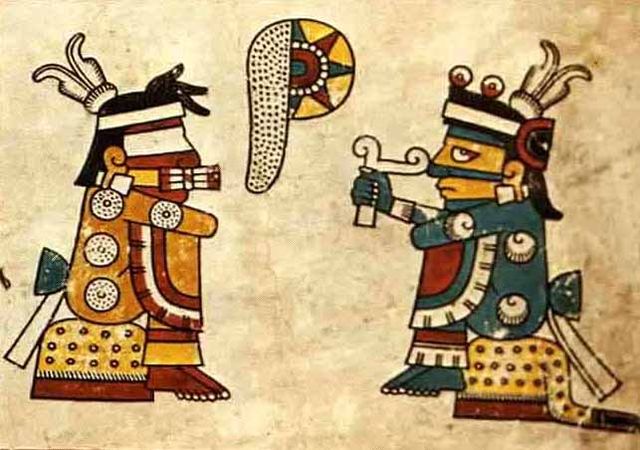In Aztec religion, Coyolxāuhqui is a daughter of the priestess Cōātlīcue. She was the leader of her brothers, the Centzon Huitznahua. She led her brothers in an attack against their mother, Cōātlīcue, when they learned she was pregnant, convinced she dishonored them all. The attack is thwarted by Coyolxāuhqui's other brother, Huitzilopochtli, the national deity of the Mexicas.
Disk depicting a dismembered Coyolxāuhqui, which was found during construction in 1978 in Mexico City. Its discovery led to the excavation of the Huēyi Teōcalli.
Archaeologists of the Instituto Nacional de Antropología e Historia working at the place were the stone was discovered, 1978.
Head of Coyolxauhqui; circa 1500; diorite; 80 x 80 x 65 cm; National Museum of Anthropology (Mexico City). As usual, she is shown decapitated and with closed eyelids, as she was beheaded by her brother, Huitzilopochtli
Original coloration of the stone disk, based on chemical traces of pigments.
Huitzilopochtli is the solar and war deity of sacrifice in Aztec religion. He was also the patron god of the Aztecs and their capital city, Tenochtitlan. He wielded Xiuhcoatl, the fire serpent, as a weapon, thus also associating Huitzilopochtli with fire.
Blue and Red Tezcatlipocas in the Codex Fejérváry-Mayer.
Human sacrifice as shown in the Codex Magliabechiano
Codex Tudela.
The founding of the Aztec capital Tenochtitlan; An eagle representing Huitzilopochtli, which exhales the atl-tlachinolli (war symbol), is perched on a nopal cactus. Teocalli of the Sacred War, sculpted in 1325.








